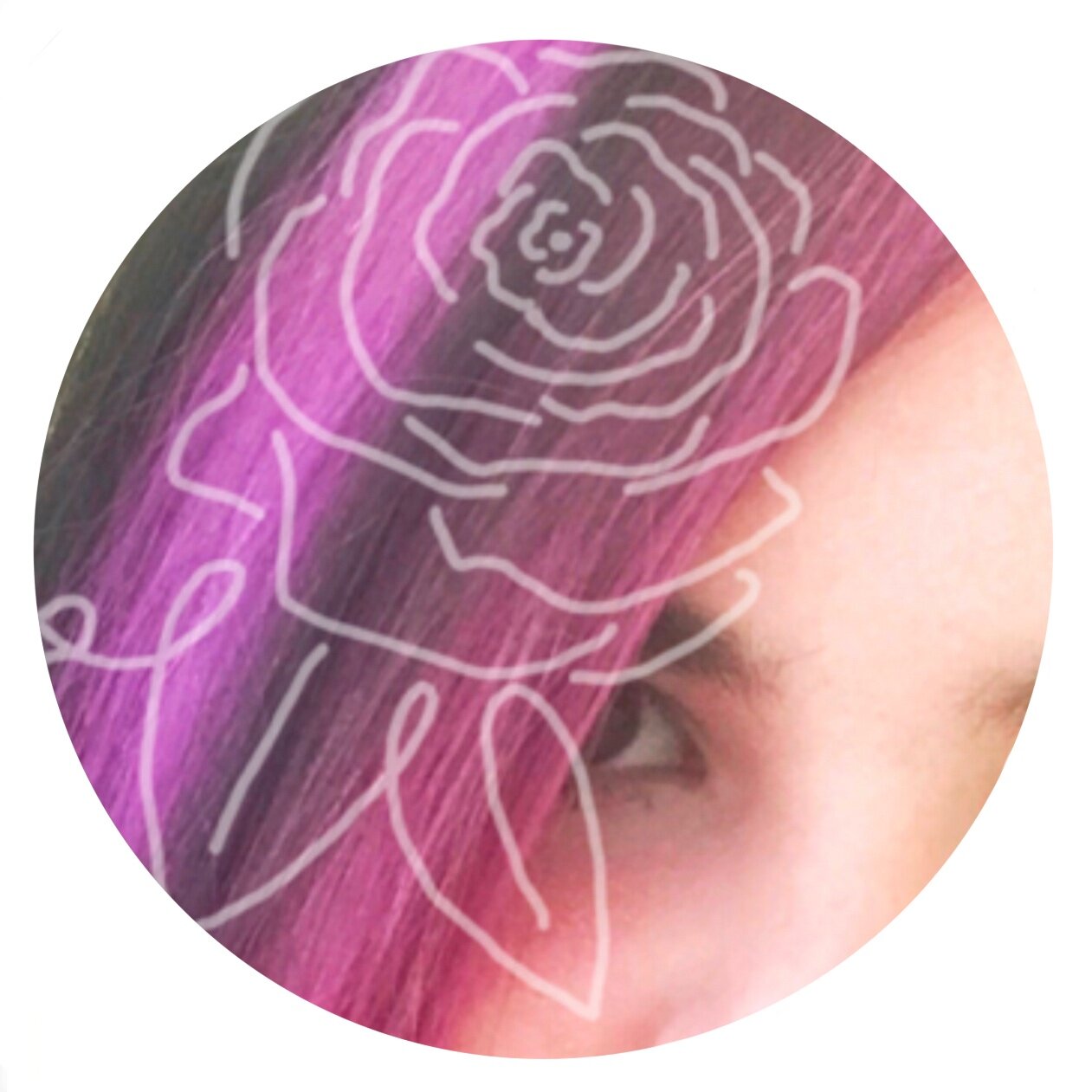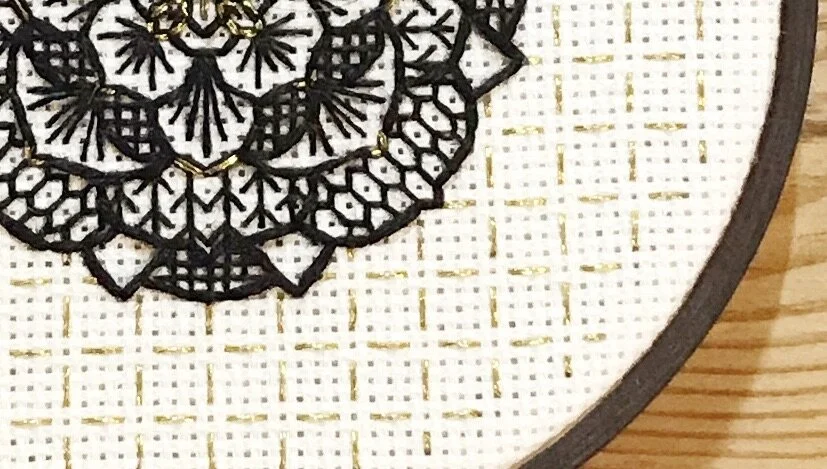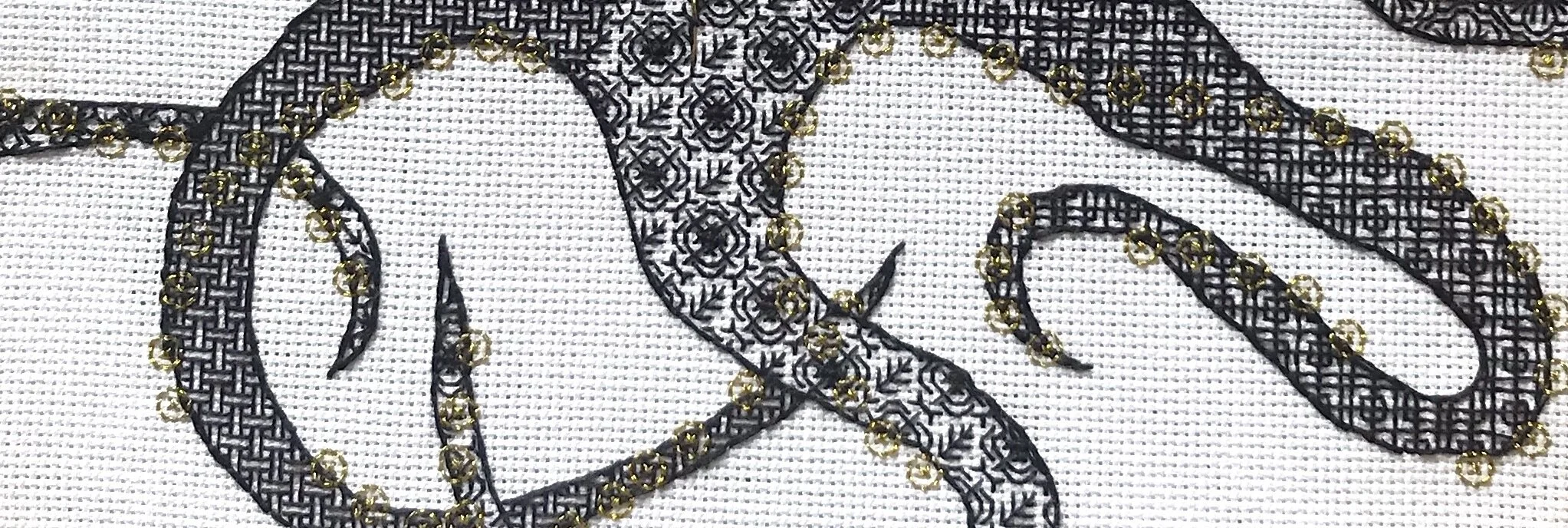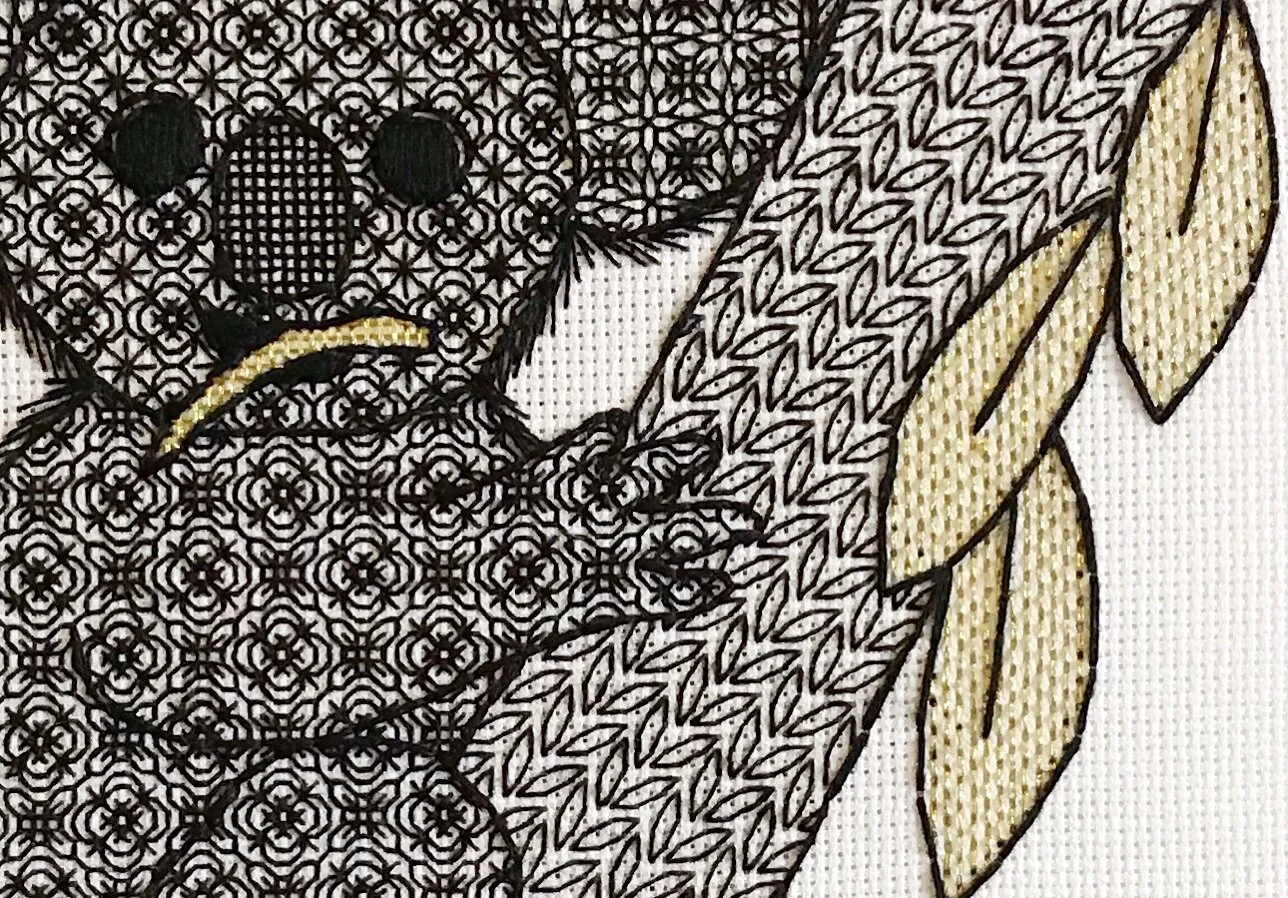The best advice I have on stitching with metallic threads
I think we can all agree, we love the look of metallic threads but hate stitching with them!
Somehow they always manage to split, fray, stretch, come unravelled or break entirely
Not an easy thing to have to work with!
While there is no way to completely solve these problems, there are a few things to be done that help to prevent them
the shorter the thread the better!
Now, I’m a big fan of long threads, I love to minimise the faff of rethreading my needle as much as possible, but when it comes to metallic threads this is not the way to go
Metallic thread tends to break and the more it goes through the fabric the more it is likely too. By using short strands of thread (no longer than an arms length) you are minimising the amount of times each thread is dragged through the fabric which should mean it frays much less often!
Use thread conditioner before you stitch
The reason that metallic threads fray so much is partly due to their rough surface which creates friction as it passes through the fabric. By using thread conditioners, such as beeswax, this friction is reduced and the thread should glide through the fabric much more easily
keep your needle at the very end of your thread
Metallic threads are very delicate, they always fray where the eye of the needle is positioned
So then, it makes sense that you wouldn’t want to have to reposition the needle all the time causing more areas of the thread to fray!
As you should already be using short lengths you should manage this fine. Place the needle just a couple of inches shy of the very end of the thread and keep it there till you are done with that length. You will notice that the thread will break and fray around your needle, but as we’ve kept this at the end of the thread the majority of the length won’t be compromised and should stitch normally
design choices
This is all about being clever with where and how you decided to use metallic threads!
You will notice that I tend to only use metallics for blackwork. The Aida fabric used in blackwork already has holes in it which makes stitching with metallics much lower risk. It’s still not easy and I do have to use all the tricks I’ve outlines above but it does help
Another thing to take into consideration is how you are going to use it, ie. what stitch will you use? Using stitches with a low impact on the thread like couching or simple backstitch is a good idea. Using stitches with a high impact on the thread like bullion knots is quite frankly insane!
If you take time to consider where and how to use metallic thread to its advantage then you’ll find the whole stitching experience much more pleasant
Some METALLIC threads to try
I’ve tried a few different types of metallic thread over the years. They all have different pros and cons and the thread you need really depends on what you are going to use it for
Sewing thread
By sewing thread I mean sewing machine thread as opposed to embroidery floss. It tends to be thinner, smoother and stronger (as it’s design to go through a machine) so is great for doing fine details in blackwork pieces. You will see I’ve used it in several of the pieces pictured in this post!
Braided threads
These threads are more tightly woven so they are thicker than regular floss. There is still a lot of fiction as they go through the fabric and they still fray around the needle but in my experience they do tend to split and break less
DMC Etoile floss
This floss is different to the regular metallic floss. Instead of being wholly metallic it is instead mostly comprised of a silky thread that has flecks of glitter running through it. Although this creates a much more subtle effect it certainly makes the stitching itself much more fun!
I hope that’s been helpful!
I know that at this time of year metallic threads are so tempting and with your new knowledge you should be able to pick them up with confidence!
Feel free to drop any other questions you have in the comments






